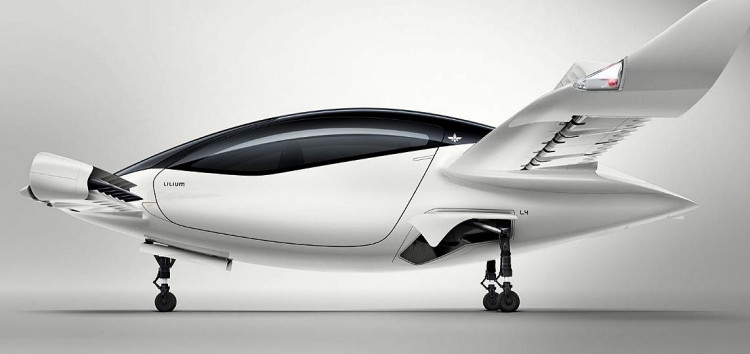German air mobility startup Lilium GmbH still intends to launch its on-demand air taxi and ride-sharing service by smartphone app in 2025.
Lilium, which first flew the prototype of its Lilium Jet (called Lilium Eagle at the time) in April 2017, revealed plans to fly passengers from Manhattan to John F. Kennedy International Airport in Queens inside six minutes. The cost per passenger: $70.
Analysts said the fare is about equal to that of a cab ride but without the maddening traffic. A flight on the Lilium jet is booked via the Lilium app.
The app will enable a passenger to locate the nearest Lilium landing pad and plan his journey. There will be a network of landing pads across cities and regions. Lilium claims prices will be "competitive with today's travel options."
All this is set for 2025, but only if Lilium can keep to its schedule. Lilium's plans depend on the progress the company will make in ironing out the kinks in its Lilium Jet vertical take-off and landing (VTOL) all-electric commuter plane.
Powered by 36 electric motors, this air taxi can travel 300 kilometers in 60 minutes at 300 km/h. It seats five: four passengers and a pilot.
Lilium Jet is unique in its use of electric power for both vertical take-offs and in the jet-powered components of its engine system. It relies completely on 100 percent renewable electric power for propulsion. Lilium said its Lilium Jet is the only electric aircraft capable of both vertical take-off and jet-powered flight.
"We have solved some of the toughest engineering challenges in aviation to get to this point," said Lilium co-founder and chief executive Daniel Wiegand back in April 2017.
"The successful test flight program shows that our ground-breaking technical design works exactly as we envisioned. We can now turn our focus on designing a 5-seater production aircraft."
In 2017, Wiegand said Lilium Jet might one day offer passenger flights at prices comparable to normal taxis but at speeds up to five times faster. He said Lilium Jet's power consumption per kilometer is comparable to that of an electric car.
Lilium said its goal in developing Lilium Jet was based on a transition aircraft concept. It wanted an electric VTOL with better performance in safety, speed, range, and payload than existing concepts while cutting complexity by a third.
Lilium then went out and "invented a completely new aircraft concept for the modern age. Transition aircraft can fly three times faster and ten times further with an equally sized battery, but system complexity is usually much higher."






